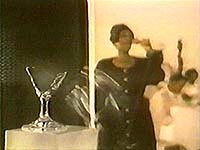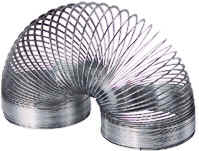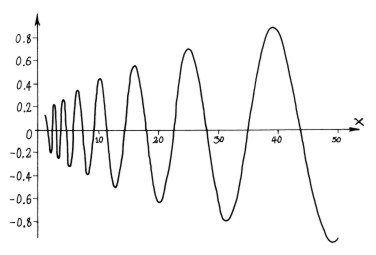 Fig 7
Fig 7Cool Stuff With Acoustics
 Fig 7
Fig 7
Two Types of Mechanical Waves
Mechanical waves are waves in materials. There are two types which can be beautifully demonstrated by using the best toy ever, the slinky. These two types are transverse wave and longitudinal waves. The transverse waves are waves characterized by a perpendicular movement to the direction of the wave propagation. A longitudinal wave is characterized by the direction of motion of the material being parallel to the direction of the wave propagation. To demonstrate a transverse wave on a slinky, simple have a friend hold one end and you hold the other and on your end pluck the slinky down and watch the movement of the slinky. Now to demonstrate a longitudinal wave, which is a sound wave, take the slinky in the same manner as before but this time take some of the sections of the slink and pull them together and then let go. The motion given off by the slinky is the motion of a longitudinal wave!!
 Fig
8
Fig
8
Three Types of Wave Oscillations
There are three types of oscillations concerning waves, natural, force, and damped. Natural, as suggested by its name, is the common frequency a material will normally give off. Force oscillation is cool because if you use it properly you can break a glass with sound!! This is shown in figure seven, where a signer is hitting the correct note with the right resonant force that it causes the glass to shatter. Figure 10 actually shows a force oscillation that is resonant. You can see how the frequency increases and this is what causes the glass to break because the glass itself starts to vibrate in that pattern until it structurally cannot handle the increase in frequency anymore and it breaks. Figure nine also shows a man breaking a wine glass using sound. Cool stuff hu?! The last type of oscillation is damped oscillations, and it is the opposite of force, in that instead of the frequency increasing it decreases.
 Fig
9
Fig
9  Fig
10
Fig
10
Easy Sound Experiment: Hear Through Your Teeth!
The next time you are bored try hearing through your teeth. This experiment demonstrate bone conduction by striking a fork on the table so that it rings like a tuning fork. With striking the fork once on the table as stated in the previous sentence do the following:
First, try listening to the sound directly.
Second, press the handle of the fork on the bone behind the ear.
Finally, bite the handle for a really LOUD sound!
Note: Enjoy the experiment, but be careful when you bite down on the fork don't bite to hard or bite down when the fork is REALLY vibrating.